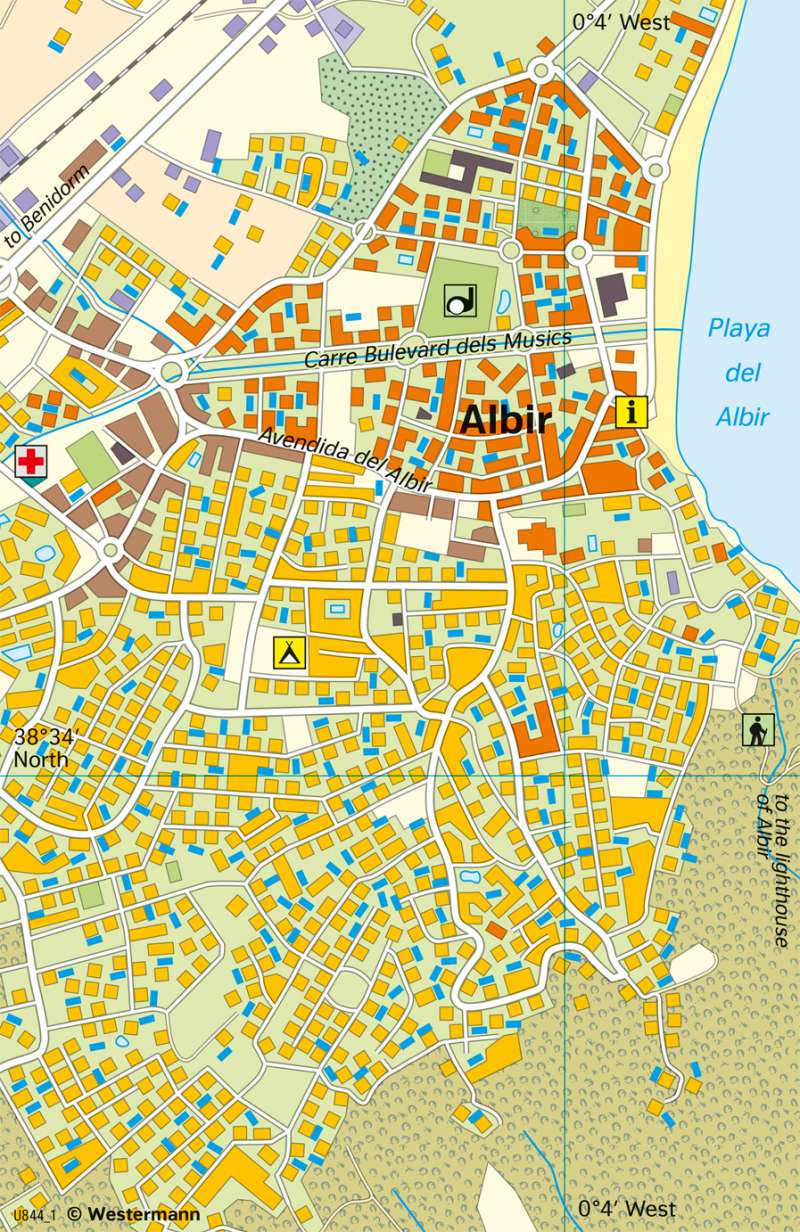Costa Blanca (Spain) - Tourism and water management
Water scarcity and water stress
978-3-14-100890-6 | Page 107 | Ill. 6

Overview
Albir and Benidorm are two holiday resorts on the Costa Blanca in the Spanish province of Alicante. Thanks to its mild Mediterranean climate, the Costa Blanca is a popular holiday destination for tourists from Spain and the whole of Europe. With the onset of mass tourism in the 1960s, the region experienced major changes. While Benidorm developed into one of the largest high-rise settlements in Europe, in Albir the emphasis was placed on the construction of holiday homes and apartments. With the large number of tourists and accommodations for them comes high water consumption, for example by pools. The diagram in 106.5 shows just how much more water is needed for the tourist industry compared to the water use of permanent residents.
Benidorm
Until the 1950s, Benidorm mainly depended on fishing. Following the land development plan of 1956, the first high-rise buildings were constructed with hotels for mass tourism. The airport of El Altet in Alicante, built in 1967, favoured this development. It was not until the end of the 1980s that greater emphasis was placed on offering higher quality: plot sizes per hotel were increased and leisure facilities were improved. In addition to new hotels, numerous urban developments came into being with holiday homes and apartment buildings. In 1960, Benidorm had 6,250 inhabitants; in 1981 this figure had already grown to 25,544, and in 2001 the number of people living in the city was 51,873. In 2019, Benidorm had 68,721 inhabitants plus countless foreign long-term residents.
Benidorm has two long sandy beaches, Playa de Levante in the east and Playa de Poniente in the west. Between them is a tongue of land with the "Balcón del Mediterráneo" vantage point, a yacht harbour and the small beach of Playa de Mal Pas. North of this tongue of land is the old town, which in addition to its residential function also fulfils a tourist function (hotels, restaurants, shops). East of the old town is a district, laid out in a checkerboard pattern, with many hotels. Most of these have at least ten stories and their own pool. Benidorm's striking high-rise skyline has put the city into second place in the world after Manhattan in terms of the number of high-rise buildings per square kilometre. In total there are 345 buildings in Benidorm of more than twelve storeys. Today the city has some 20,000 hotel beds as well as countless further accommodation possibilities in apartment buildings and holiday homes. Year after year, five million tourists visit this important holiday centre, a high proportion of them from Great Britain.




